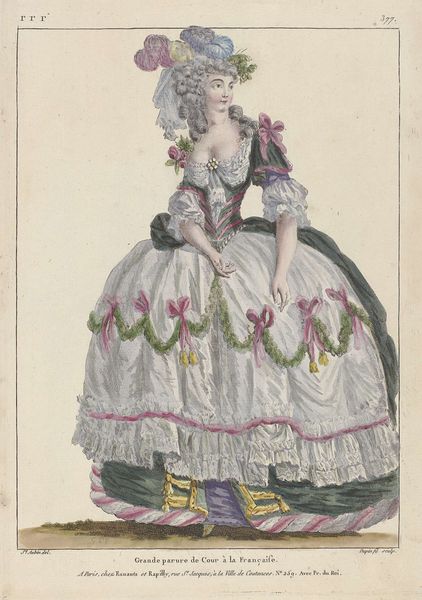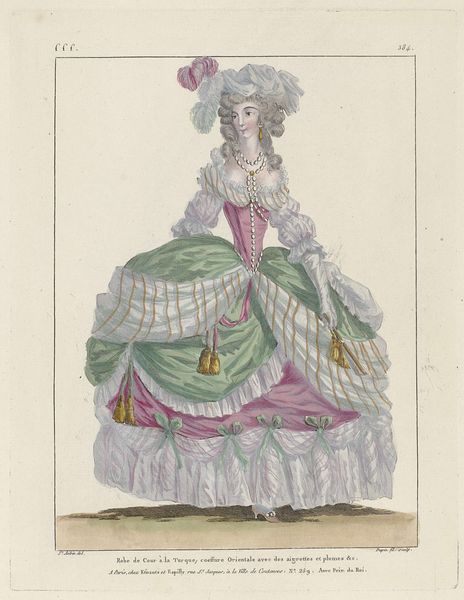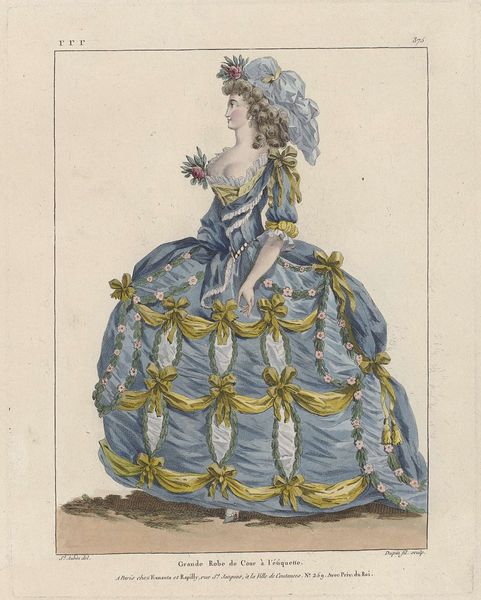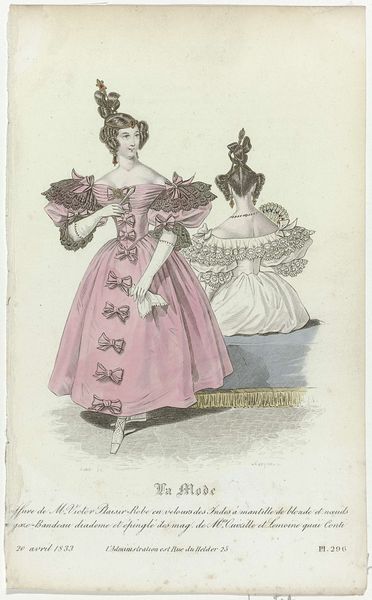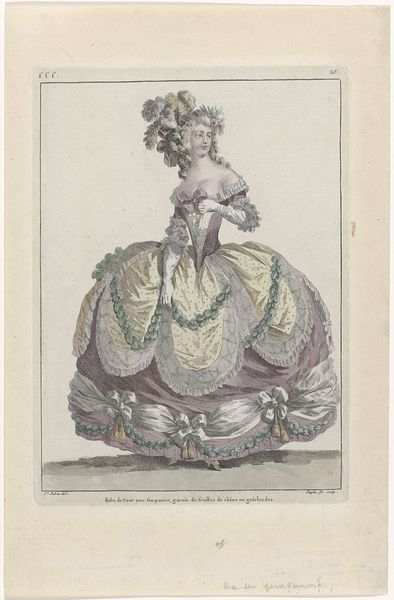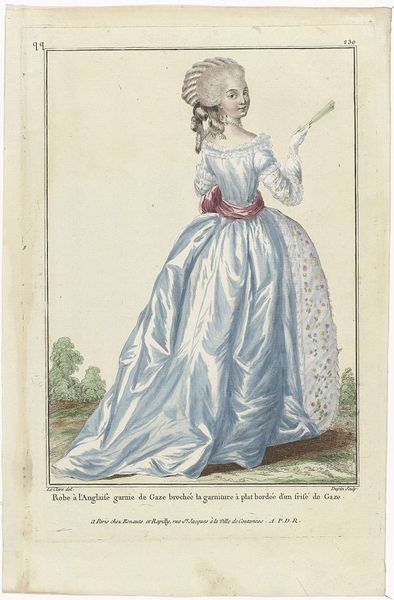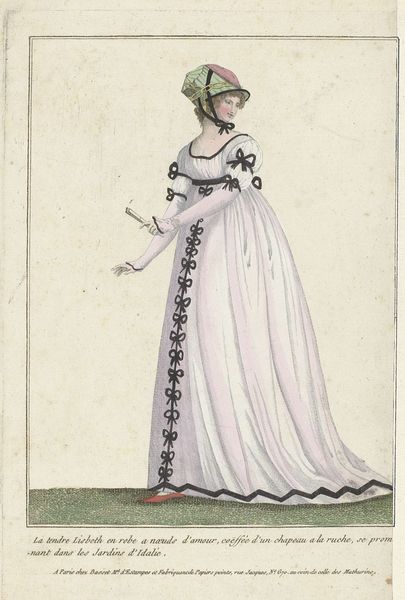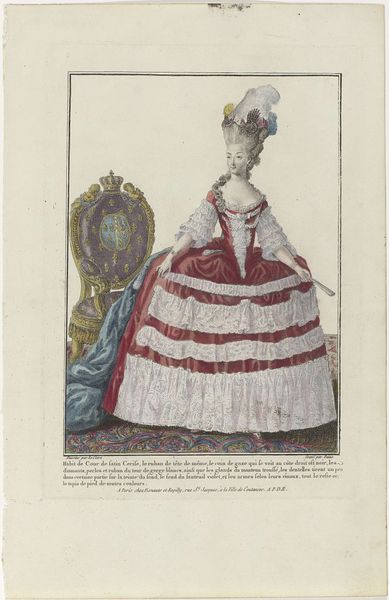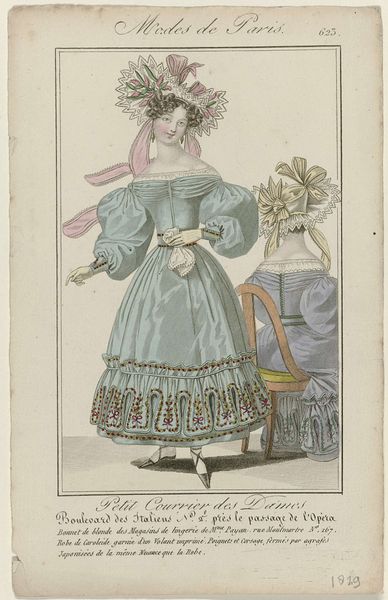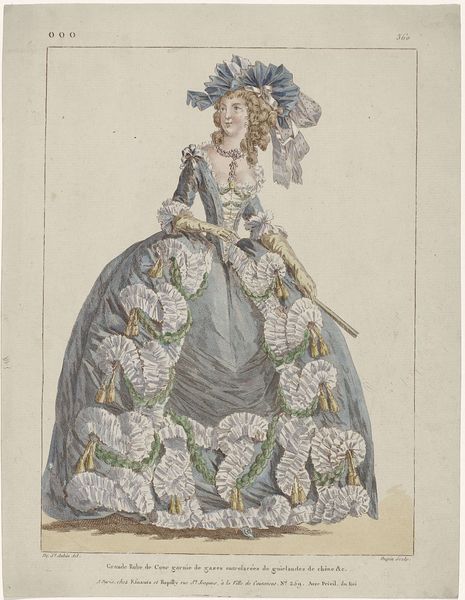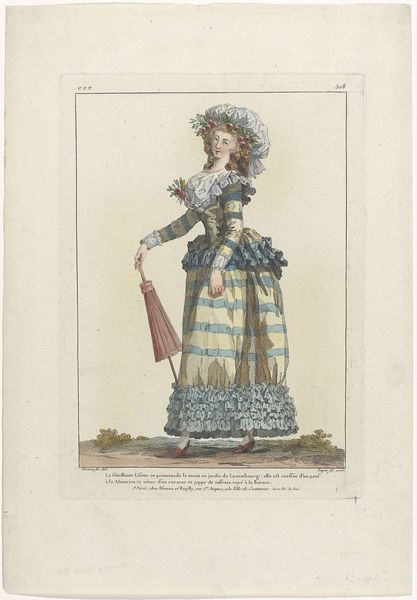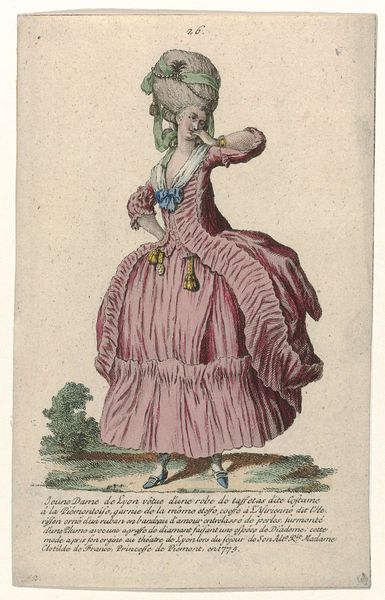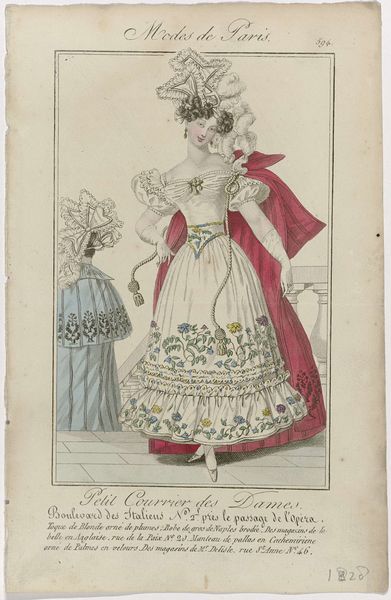
Marie Antoinette: The Queen of Fashion: Gallerie des Modes et Costumes Français c. 1787
0:00
0:00
nicolasdupin
Rijksmuseum
Dimensions: height 297 mm, width 216 mm
Copyright: Rijks Museum: Open Domain
Nicolas Dupin created this print, "Marie Antoinette: The Queen of Fashion," in France during a time of immense social stratification and political upheaval. It’s part of a series documenting French fashion, but it also reveals a great deal about the performance of identity and power at the time. The elaborate, almost cartoonish dress, with its wide panniers and floral embellishments, speaks to the excesses of the French aristocracy. One can imagine Marie Antoinette, notorious for her extravagant tastes, embodying this image. Yet, this is more than just a portrait of a queen. It’s a statement about gender, class, and the visual language of privilege. The image invites us to consider how fashion can be both a tool of empowerment and a symbol of detachment from the realities faced by the majority. This print, while seemingly celebrating opulence, can also be seen as a commentary on the socio-economic disparities that ultimately fueled the French Revolution. It asks us to reflect on the emotional impact of such displays of wealth, both then and now.
Comments
No comments
Be the first to comment and join the conversation on the ultimate creative platform.
